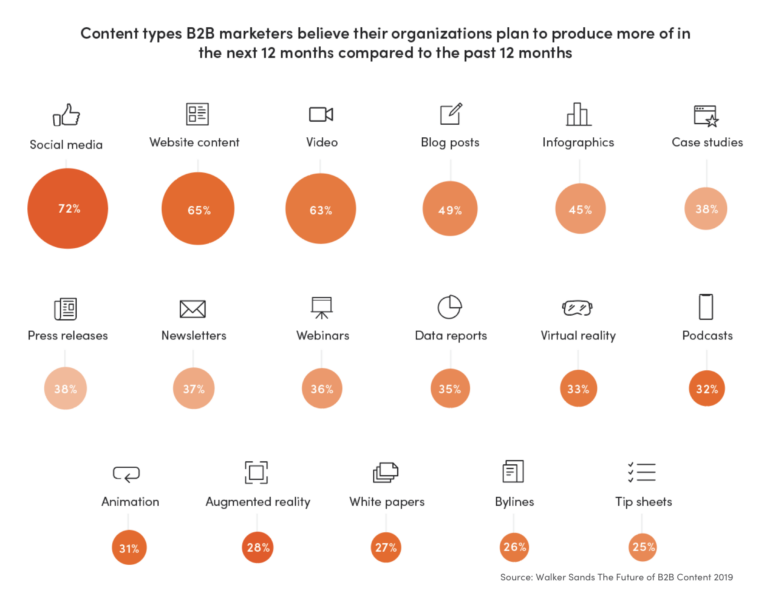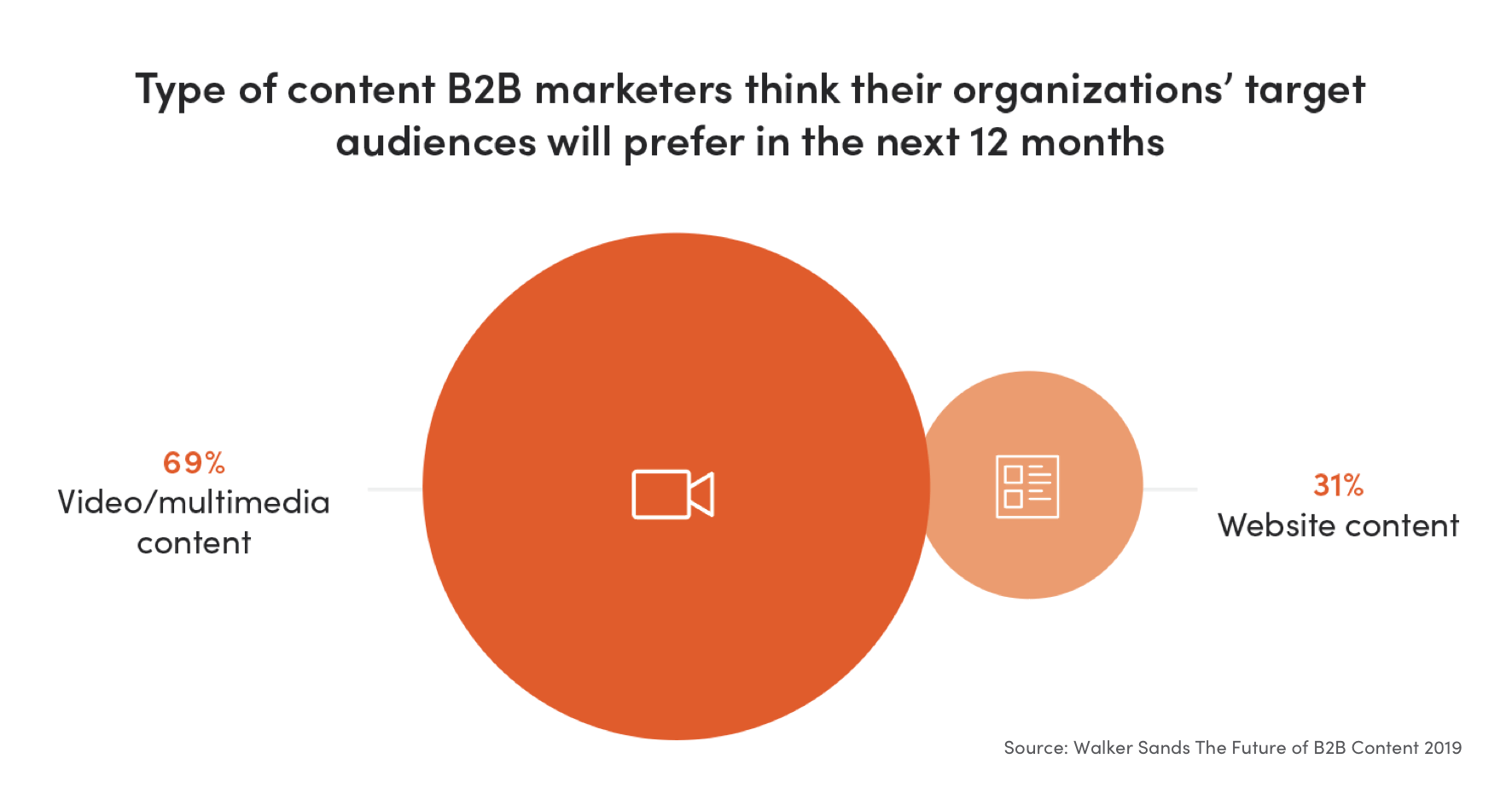Content is still king, but we’re experiencing a regime change. For B2B marketers, long-form content assets no longer reign supreme. Short-form content is making a run at the throne.
This month, we launched our inaugural Future of B2B Content report — an in-depth look at what’s next for B2B content. We found that B2B marketers plan to produce more social (72 percent), website content (65 percent), video (63 percent) and blog posts (49 percent) in the next 12 months than they did in the previous 12 months.

The takeaway: Greater reliance on mobile and user preferences are driving a push for shorter content. In the B2B world, snack-size (or snackable) content will increasingly serve as a factor in brand success.
What exactly is short-form content?
Long-form bylines and white papers don’t belong on social media. But a snackable version of the message most certainly does. Short-form content offers B2B brands a storytelling medium that is bite-sized, relevant to the platform and informative. Here are some examples of assets and activities considered short form:
- GIFs
- Short videos
- Social media
- Multimedia
Why is short-form content valuable to B2B audiences?
Today’s buyers have shorter attention spans and are unlikely to commit to lengthy content unless they are convinced of its value. The right piece of short-form content enables brands to rapidly communicate key messages, improving the asset’s ability to capture the attention of target audiences. Short-form content is also a ready-made resource for users who consume content on mobile devices — a growing segment of most brands’ customer bases.
The growth of video/multimedia is tied to the fact that many B2B products and services are technical and specific. Words can tell powerful stories. But the use of video, animation and graphics makes complicated messaging more digestible for a broader range of potential customers, from the executive decision maker interested in the latest innovations to the end user who can become an in-house advocate for the product.
Additionally, video generates 1,200 percent more shares than text or image posts, strengthening B2B brands’ social strategies. So it’s not surprising that our report showed 69 percent of B2B marketers believe their audiences will prefer video and multimedia content in the next twelve months over written content.

But short-form can’t drive results on its own.
As flashy, fun and digestible as many short-form assets are (like the GIF we made to promote the Future of B2B Content 2019 report), B2B marketers should use them to drive traffic to higher-value assets that generate leads. An interesting, snackable video increases brand awareness, but short-form content should also inspire action. And that’s where long-form assets and multi-channel marketing strategies enter the picture.
In the past, brands primarily relied on search-optimized landing pages and paid campaigns to drive traffic to data reports and other high-value (i.e., lead generating) assets. Although these tactics are still important, landing pages and paid campaigns aren’t capturing the attention of buyers who live on social.
Forward-thinking B2B brands are creating snackable videos that capture audience attention and drive traffic to higher-value content assets — content that is more likely to generate actual business results.
The focus of B2B snackable content is to create customers, not necessarily to entertain. But with animations and high quality creative paired with strong messaging, it’s possible to have the best of both worlds.
Is it time to re-examine your content strategy?
Walker Sands’ Future of B2B Content 2019 report found that brands recognize a need for more short-form content. Although B2B marketers acknowledge how important video/multimedia, social, blog and even site content is to their brand, they are either unable or unsure how to produce it. For many B2B brands, this means it’s time to re-examine their content investments and double down on short-form content.
To learn more about the rise of short-form content and how other B2B marketers are managing the changing content landscape, download the full Walker Sands’ The Future of B2B Content: How Marketers Turn Content Into Real Business Impact report.



